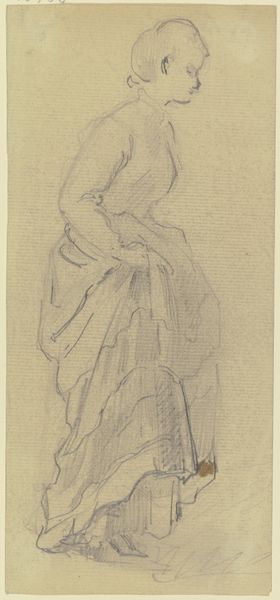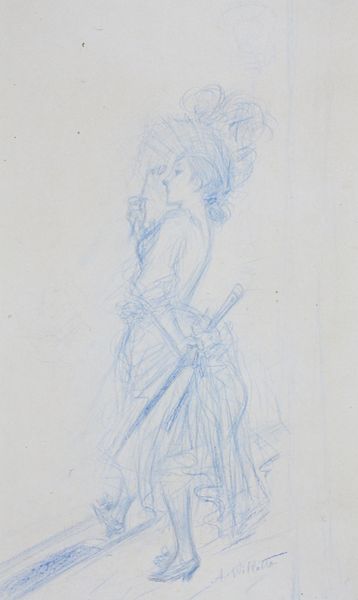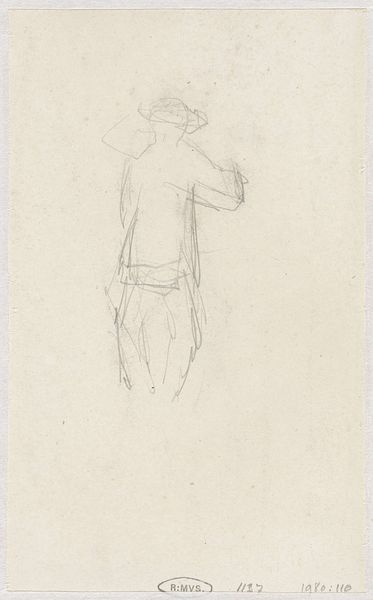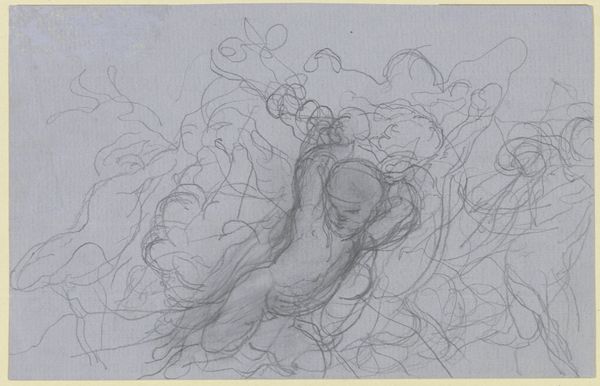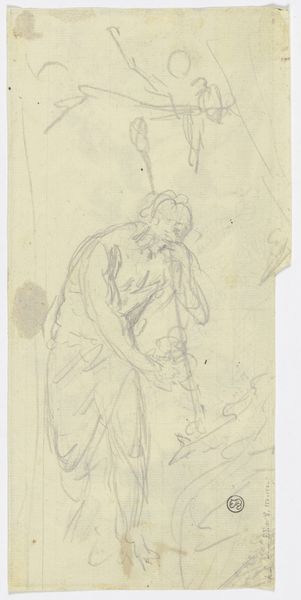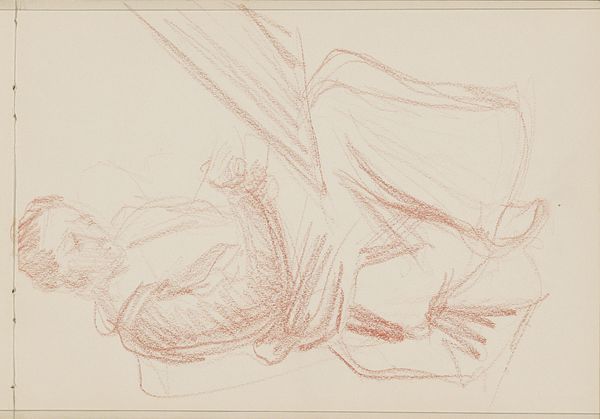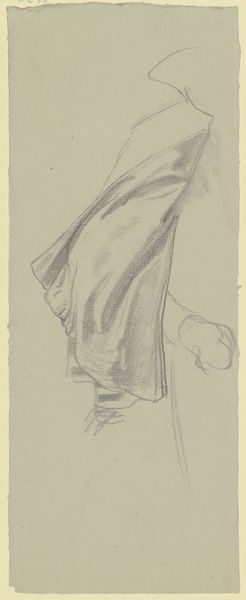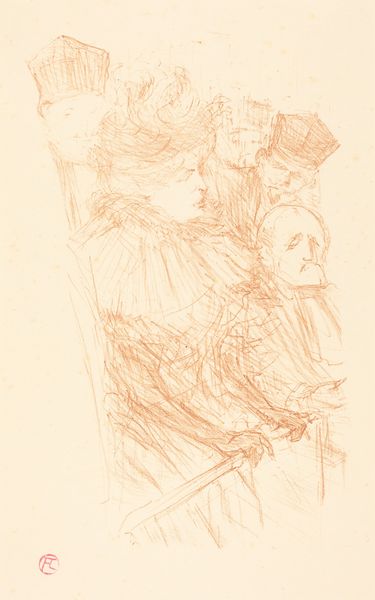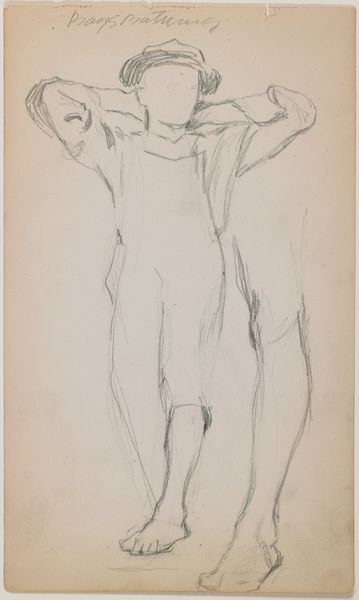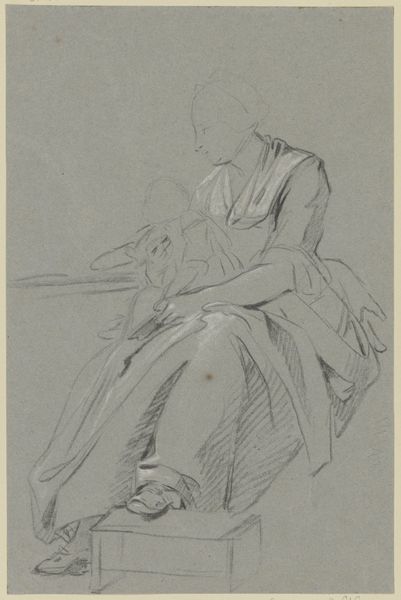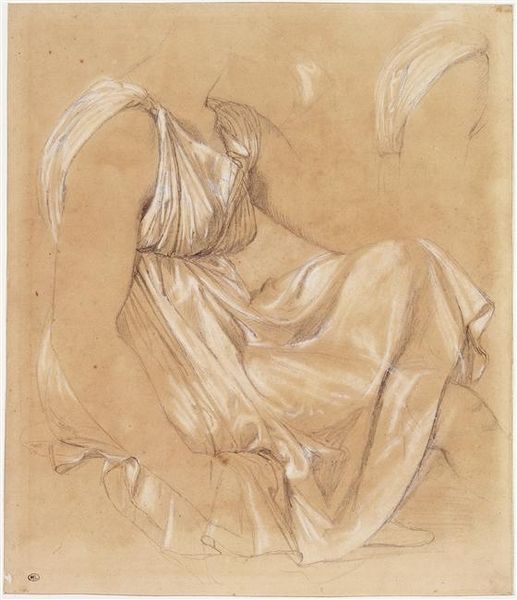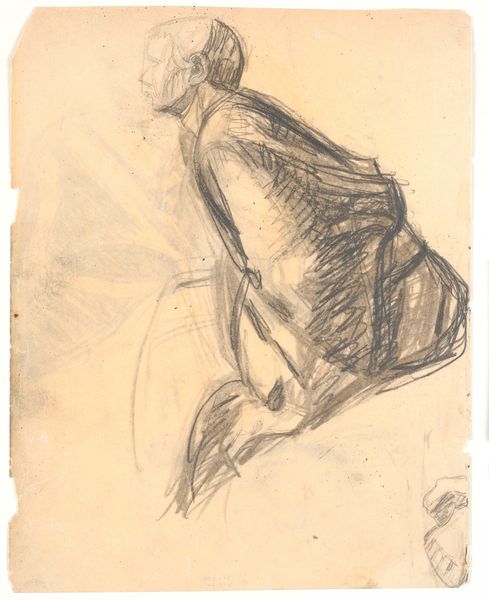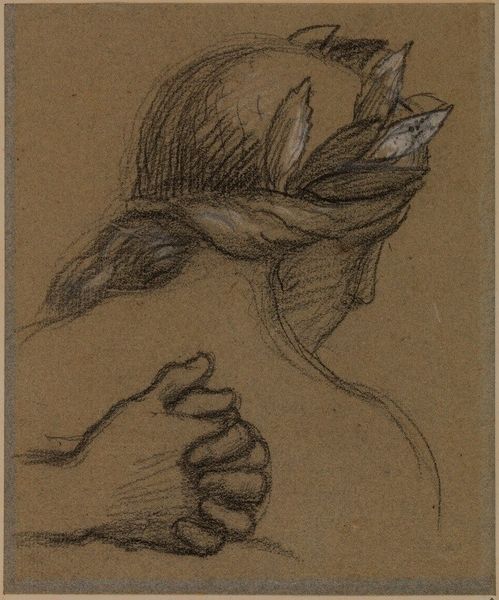
drawing, pencil
#
portrait
#
drawing
#
neoclacissism
#
pencil sketch
#
pencil
#
portrait drawing
#
history-painting
#
nude
Dimensions: 167 mm (height) x 122 mm (width) (bladmaal)
Editor: We’re looking at “Lucretia,” an 1810 pencil drawing by C.G. Kratzenstein Stub. The sketchy quality and stark nudity, even in this unfinished state, evoke a feeling of vulnerability. What can you tell us about the social context of this depiction? Curator: Well, let's unpack that vulnerability. The story of Lucretia, a Roman noblewoman who committed suicide after being raped by Sextus Tarquinius, was often used to symbolize female virtue and resistance to tyranny. But was it *really* about female agency? Or was it about male honor, using a woman's body and trauma as a political tool? Editor: I see your point. The composition does place emphasis on her physical form. How does this fit into the Neoclassical movement? Curator: Neoclassicism often looked to classical antiquity for its themes of heroism and sacrifice, but even then, the gaze through which those themes were depicted was entirely male-dominated. Lucretia's suicide becomes less about her own power, and more about restoring patriarchal order after it's been breached. Where does the nuance for *her* lie? Editor: So, are you suggesting the artist may not have been intending to empower her, but rather use her story as a political or moral example? Curator: It's vital to remember that historical context when interpreting such pieces. This wasn't simply art for art’s sake. By engaging with classical themes, artists participated in constructing a very specific idea of civic virtue, and the roles women, willingly or not, would take to meet them. The power, or powerlessness, becomes the focal point, a subject, never an acting subject. Editor: That's given me a lot to consider. I had not fully understood the complexity of the figure in historical, feminist terms. Curator: It’s a challenge, isn’t it? We need to ask, whose story is truly being told and for whose benefit? These critical questions allow us to see art history not just as a reflection of the past but as an active participant in shaping the present.
Comments
No comments
Be the first to comment and join the conversation on the ultimate creative platform.
